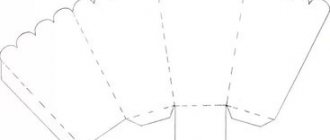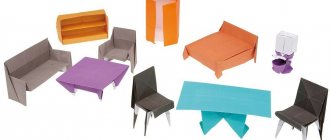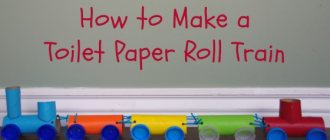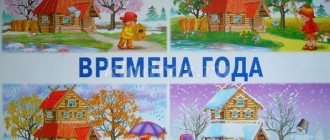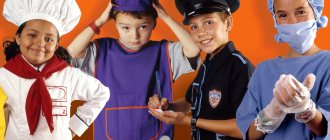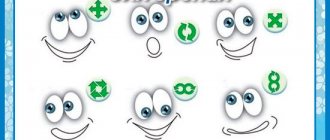Most children aged 5–6 years are quite capable of independently reading the diagram of an origami craft, and then folding the desired model according to it. This is a great way to prepare for school while developing creativity, logic and discipline. Of course, the schemes should be simple and understandable, with a minimum number of steps. There is no need to immediately set super-tasks for the child, which, instead of development and a positive mood, will only bring worries and loss of faith in one’s abilities.
A Brief History of Origami
Various sources indicate that origami originated in China, and later tourists brought it to Japan. Today this type of creativity has won love and recognition all over the world. The word itself comes from two: “folding” and “paper”, which speaks for itself.
Initially, this activity was available only to people from the upper classes. It was believed that the ability to make origami is a sign of good form. Friedrich Froebel brought the secrets of the art of folding paper figures to Europe. And today this exciting and useful activity is available to everyone. Origami lessons can be organized even for the youngest children; you just need to select tasks in accordance with the level of preparation and age of the child.
The tradition of proper origami technique has been preserved to this day in Japan. Its secret lies in the so-called art of the whole sheet; you cannot add or subtract anything, you need to be able to create something from one sheet of paper.
| Origami is not just about creating an image from paper, it has a deeper meaning, like everything oriental. Few people know that the art of paper folding was used in religious rites and ceremonies. It is interesting that the word “paper” and “God” sound the same in Japanese, perhaps this is not just a coincidence. At many weddings, origami butterflies were used to decorate the glasses of the guests. |
First steps
In the middle of the last century, the famous origamist Akira Yoshizawa developed a universal system of signs that described the process of folding paper figures. Today this unique “alphabet” is used all over the world. Conventional signs indicate precisely and without words what needs to be done to achieve a result.
First, children need to be introduced to the most important symbols that are found on almost any diagram.
These are different types of folds:
And options for working with the workpiece:
It’s good if the acquaintance takes place in a playful way, so little origamists will remember it better.
Basic forms
Folding any, even the most complex paper figurine, begins with simple steps that are performed in a certain sequence. This is how a basic shape is formed - the master then builds on it, adding folds, bending or turning to get a specific model.
The entire diversity of the world of Japanese papermaking is based on this system. Experienced craftsmen use 11 basic forms; for children aged 5–6 years old, for origami crafts it will be enough to know the following elements:
- "triangle";
- "book";
- “cabinet” or “doors”;
- "kite";
- "Crap";
- "water bomb"
The video tutorial will tell you how each of the basic forms is made:
Skills and techniques
Children who can fold basic shapes and recognize them in diagrams are ready to dive into the endless sea of origami ideas. The next stage of their training will be to develop the skills of carefully handling paper so that the figures look aesthetically pleasing and do not “creep”. What should you pay attention to first?
- The fold lines, if they then do not open again, should be smoothed well with a finger, a ruler or the tips of scissors. Then the figure will not lose its shape.
- Bend the model clearly in the directions indicated in the diagram, maintaining symmetry around the central axis.
- When folded, opposite corners and sides are completely aligned with each other.
- The so-called “pockets” - the opening internal parts of the workpiece - must be handled carefully so as not to tear.
The patience, attentiveness, dexterity, and caution developed in the process of practicing these techniques will be very useful in the process of schooling, which is just around the corner. The more independence children show when making figurines, the more useful skills they will gain.
Traditions associated with origami
- In any educational origami book you can see the figure of a crane. The fact is that this particular figure has long symbolized love, faith and hope among the Japanese.
- In Japan, it is customary to give various origami crafts for good luck. The gift is given as gratitude, love and appreciation.
- Origami figures are even used as amulets. This is a very old tradition, but it is still valid in the modern world. It was believed that if you carry such amulets with you, they will bring good luck.
We can probably say that our country also has its own traditions associated with this type of art. After all, almost every one of us has been able to fold at least one of the three origami figures since childhood, the most popular in Russia - an airplane, a boat or a Panama hat. Be sure to teach your children how to make them too! What, you don’t know how or have you forgotten something? Then here are simple diagrams to help you.
Paper airplane
Paper boat
Paper Panama
Types of origami
Paper folding is very diverse. It includes many methods and techniques.
Here are some of them:
- Classic art involves the use of a white square-shaped sheet without additional materials and tools: scissors, glue, paints.
- Modular. The figurine is made up of many identical parts.
- Kirigami. A separate variety, the peculiarity of which is the use of scissors.
- Movable toys. For example, a jumping toad, a fluttering butterfly. Created for play and puppet theater.
For your first acquaintance with origami, it is better to choose the classic direction. Origami patterns for preschoolers should be quite simple. You need to start learning with simple steps. First, the child learns to bend the sheet evenly, masters the basics: how to fold paper, getting two rectangles, four squares, four triangles. Then you can move on to simple figures, the creation process of which consists of a small number of actions. And then, as you accumulate knowledge and experience, you can complicate and introduce into the program figures that require a certain skill in folding paper in various ways.
Yacht
Fish
Ice cream
How origami is useful for kids
Every year origami is improved, which is why it is gaining more and more popularity. Creative people who like to create new things from simple materials will certainly suit this type of activity. For children who are interested in the new and unusual, origami can also bring a lot of fun.
Origami crafts for children are a real treasure trove of their development. Creating figures of animals, plants and objects from a simple sheet of paper is real magic for a child. By assembling interesting origami from paper, the baby not only calms down and stops the chaotic running around, he plunges into the magical world of paper, feeling like a wizard who can work miracles.
This type of creativity brings great benefits to the development of the child. While practicing with paper, patience, perseverance, intelligence, and imagination are trained. The child folds paper according to a pattern and at the same time trains finger coordination, fine motor skills of the hands develop, and along with it the development of speech occurs. Good hand coordination will help your child in school: writing skills are developed and beautiful handwriting is formed. By remembering exactly how to fold a piece of paper, the child trains his memory.
Experts note that familiarity with geometric figures in childhood helps to better master mathematical sciences and drawing at school. Origami will introduce the child to the basic shapes - circle, triangle, square, and will give concepts about such terms as angle and vertex.
Making origami from paper helps a child develop his eye, the ability to finish what he has started and keep his workspace in order. The child’s artistic and aesthetic taste, logical thinking, and hard work also develop. The child learns to work under control and carry out assignments, which will be useful to him at school.
Origami classes are a kind of psychological relaxation; the child is immersed in the interesting world of crafts, distracting himself from worries and other matters.
The great advantage of the art of paper folding is its accessibility. In every home there is paper - an inexpensive and most common material. This material is safe and there is no risk of spoiling it.
Origami classes for young children can be completed with theatrical performances, using made figures for them. Perhaps it will be a fairy tale with a certain plot, which will arouse even greater interest in the child, because every day you can come up with new characters.
In addition, crafts will be a wonderful gift from a child to relatives and friends on any occasion. They can also be used in other ways: they can be used in role-playing games or as counting material in mathematics classes. By creating identical figures of different sizes, you can train the concepts of large-medium-small.
Origami materials
The classic, familiar material for folding is paper. However, any sheet is suitable for origami, for example, foil, parchment, starched fabric. Special paper can be bought at the store; it is square in shape, with one white side and one colored side. It feels thinner than the one we buy for the printer, making it easier to fold several times.
But in Japan, classic figures are folded from washi paper. This is a handmade material, dense, heterogeneous, compared to ordinary sheets.
How to make origami crafts with children
The child will not be able to start practicing paper origami on his own; here he needs help and clear guidance from an adult (parent or teacher). Children love to study with adults; this helps them bond. You should start with the simplest figures that can be completed in one approach.
It will be interesting to combine origami classes with other forms of art. For example, a child will paint a finished figurine with great interest. It is interesting to decorate the figurine with applique, glue beady eyes or a fluffy tail to the animal. You can even create a three-dimensional applique by gluing beautiful flowers onto whatman paper.
At the initial stages, you can interest the young researcher by telling a fairy tale during the lesson. Any adult can easily come up with a story, for example, “The Tale of a Piece of Paper,” “The Tale of a Frog” (bear, bunny, bird), etc. You should start from the topic of the lesson.
Older children can diversify their activities with paper with stories about its origin, ancient China and Japan, and modern paper production technology.
When putting together animal figures, you should at the same time talk about their habitat, nutrition, and appearance, expanding the child’s erudition. When enough paper figures have accumulated, you can organize a theatrical performance. For the baby, this will be a real adventure with a storm of positive emotions.
During paper origami classes, an adult should behave patiently and try to interest the child. If something doesn’t work out for the child the first time, if the folds are not straight and the figures are crooked, the adult is still obliged to praise the craft and the creator, making him want to continue doing it.
The duration of the lesson should not exceed half an hour; if the child is tired, you can entertain him with finger exercises.
Below are the simplest origami for children. This is where you can begin to immerse your child in the fascinating world of origami.
Easy paper origami - “Dog”
Scheme
Video
Others similar in manufacture
Puppy
Chanterelle
Koala
Kitty
Baby elephant
Origami for children “Frog - Jump”
Scheme
Video
Two more versions of origami step by step “Mouse”
Scheme
Video
Origami from colored paper “Little Penguin” and “Emperor Penguin”
Scheme
Video
Methodology and options for constructing classes
Before you start making origami with your children, you need to master the basic rules of folding and working techniques, basic forms.
The implementation of the origami making technique for the senior group consists of the following points:
- carrying out system work;
- folding figures from simple to complex;
- searching for an individual approach to everyone;
- providing independent choice;
- organization of interaction;
- creation of thematic cycles.
When implementing the methodology for conducting origami classes for older preschoolers, you can use the following types of work:
- individual;
- group;
- with parents (there may be consultations, group meetings);
- creative activities together with children and their parents (for example, a circle).
Editorial Voice
Irakli
Lord of Paper Sheets
Ask a Question
Training with children, structured according to the methodology, should have three stages : initial, main, final.
Elementary
Children need to be told that the birthplace of origami is Japan . Here you can create a thematic album, watch a cartoon, play a game. The teacher can tell the children why paper is needed, what it is made from and what crafts can be made from it.
The following classes are conducted:
- The production of basic forms and simple crafts begins. It could be a book, candy or ice cream. The site for the exhibition is being prepared.
- A parent meeting is held. Parents are encouraged to collaborate with their children. A consultation is being held on the topic “Why activities with paper are so important for children”, “What can be made from paper”.
- Methodological literature is selected. A long-term plan for classes in the circle is developed, and didactic material with different levels of complexity is selected.
- A designated corner is created in the group. It will display crafts of different levels that the children were able to make. Additionally, a file cabinet with finger exercises is installed in the corner.
Basic
At this stage of training, the teacher and children face the following tasks:
- read and learn poems related to animals, flowers and insects;
- conduct experiments with paper, create a collage;
- make and present paper crafts in the shape of animals;
- organize and conduct a theatrical performance with products;
- make a panel with handicrafts made by children;
- create holiday cards;
- conduct role-playing games with products;
- organize environmental activities using origami;
- complete homework with the participation of parents;
- organize a parent seminar on the topic “Joint activities with children at home.”
If you wish, you can make a miniature museum , which will contain crafts made in the garden and at home. This is where you can display paper gifts for parents.
Final
At this stage, children can already “play out” new figures on their own. New goals are set for them:
- find a new way to fold it yourself;
- make a picture or card using only a specific piece of paper.
During this period, it is important to consolidate the acquired knowledge in the learning process. To do this, you can organize a competition in which crafts that children make at home with their parents will be presented. After the competition, all children are awarded certificates for having explored the magical world of origami.
Editorial Voice
Irakli
Lord of Paper Sheets
Ask a Question
The implementation and construction of classes can be carried out using different techniques. One of the most successful is the production of “transformer toys” . Children like this approach, since most modern toys have this property and they are already familiar with the principle of transformation.
Origami in kindergarten
As already mentioned, origami is the art of creating various figures from paper. Thanks to the many different images conveyed using an ordinary sheet of paper, this direction of creativity is known throughout the world. In addition to the fact that this type of crafts has become a kind of hobby for many people, it is also included in the additional education program in preschool educational institutions. Studying the art of origami in a preschool educational institution is a wonderful method for developing intellectual and creative abilities in children.
Origami is not only a way to have an interesting pastime. Regular practice of this unusual type of creativity develops a lot of useful qualities and has a beneficial effect on thinking and intellectual development.
Video selection of simple origami for children
Goals and objectives of origami classes for preschoolers:
- Creative skills. Origami combines two types of brain activity: imagination and logic. This unique mind game harmonizes the hemispheres of the brain and activates the ability to find fresh ideas and create something new.
- Attentiveness. When creating any piece of paper, even a simple one, a strict sequence of actions is required. Therefore, origami in kindergarten is one of the most useful methods for developing attention in children.
- Concentration and perseverance. Before the age of 6, many children find it quite difficult to maintain attention on one object for a long time. The only way to develop perseverance and concentration is to find an interesting activity for the child that can completely absorb his attention.
- Beneficial effects on mental health. Doing these types of arts or crafts reduces anxiety levels. In addition to origami, there are a number of similar activities: plasticine modeling, bead weaving or embroidery. However, unlike paper crafts, working with a needle or small beads can be dangerous for a small child. Therefore, origami for preschoolers is an ideal option.
- Memory. Folding paper figures usually takes place in several stages. Due to the fact that children have to remember and reproduce the entire sequence of actions, memory develops.
- Development of aesthetic taste. The foundations of the concept of beauty and the sense of beauty are laid at an early age. It is very important at this stage of development not to miss the moment and to instill in children an aesthetic taste.
- Spatial thinking. Starting to master spatial geometry will help develop your imagination. In addition, some teachers believe that origami for preschoolers is a good help for further study of mathematical disciplines.
- Fine hand motor skills. The skill of folding paper requires precise and careful hand movements, since the correct folds determine how smooth and high-quality the paper work will be. In the future, this skill will help you more easily master various areas that also require finger dexterity. For example, playing musical instruments, drawing, various types of needlework, such as knitting, embroidery, beading. In addition, psychological research has revealed a direct connection between the development of fine motor skills of the hands and speech. Regular practice, which requires a subtle approach and precise, gentle finger movements, helps develop diction and articulation. Therefore, circle work in a preschool educational institution on origami will be very useful. Especially in speech therapy kindergartens.
Summary of GCD in the senior group. Topic: paper construction (origami) “Airplane”.
Summary of continuous educational activities in the senior group.
Subject:
designing an “Airplane” out of paper (origami).
Educator: Gavrilyuk Svetlana Vladimirovna
Program content:
To promote the accumulation in children of specific ideas about airplanes;
Refine and consolidate the ability to fold a sheet of paper in half, diagonally;
Teach children to work according to the model;
Strengthen children's knowledge about types of aircraft and their purpose;
Foster a sense of responsibility and collectivism.
Material and equipment:
illustrations of different types of aircraft; sheets of paper, aircraft manufacturing diagram, felt-tip pens.
I.part
Educator: Hello, guys. I am very glad to see you at the lesson for young modelers and designers. What we will construct today, you will find out by guessing the riddle: Who can tell me what kind of bird is rushing in the sky like the wind. White draws a trail behind him in the blue azure? And the pilot is driving it! - What is this? - … (Airplane)!
Educator: Guys, how can you figure out what the plane is for? (children's answers)
Educator: Guys, what types of aircraft do you know? (children's answers).
Educator: What are passenger planes for? (intended for transporting passengers and luggage).
Educator: What are cargo planes for? (intended for transporting various goods).
Educator: what is military aviation needed for? (designed to solve problems of a defensive and offensive nature).
Educator: Guys, how are airplanes used in agriculture? (application of mineral fertilizers, use of growth stimulants, pest and weed control, protection of crops from diseases, monitoring).
Educator: I suggest you and I go on a trip by plane.
Dynamic game "Airplane".
We get on the plane. (We squat).
Let's take off. (They start it up, get up, buzz-zhu.)
We are flying above the clouds. (Hands to the side).
We wave to dad, we wave to mom. (We wave with our left hand, we wave with our right hand).
We see how the river flows. (Show waves with hand).
We see a fisherman in the boat. (They show how a fisherman casts a fishing rod).
Watch out, mountain! (Lean to one side, then to the other).
It's time for us to land! (Sit down in their seats). Part II. Showing methods of action. Collaborative work between children and teacher.
Educator: Now we are leaving from the Kindergarten airport to the Konstruktorskoye airport, and this is where the second part of the flight training will take place.
Educator: I will teach you how to make paper airplanes. What do you think is the best paper to use?
Children: Thin and strong.
Educator: You are right. How do you think the paper should be folded to make the planes beautiful?
Origami theater in kindergarten
Another interesting area of creative development is the origami theater; in kindergarten, the organization of such activities will allow solving many educational and educational problems. Children can not only be spectators, but also directly participate in a theatrical production. Kids need to be given the opportunity to express themselves. By improvising, they create amazing stories. For the theater, it is advisable to select simple paper toys. The best and most understandable option for children is animals. With them, kids willingly come up with various fairy tales.
Origami for beginner schoolchildren
If you are a teacher and want to teach children the art of origami, use the following tips:
- To start, choose very simple models. Just remember that they should be easily recognizable by children, such as animals. Progress to more complex models gradually.
- 1 class. First graders are most effectively taught in small groups of 4-5 children. You can teach the whole class at the same time, but most likely some children will not follow the instructions exactly and will end up with their own original creations.
- 2nd grade. Second graders are already more intelligent, especially if they have some experience in folding paper figures. It's worth trying to teach the whole class at the same time. Show them what the finished model will look like so they are encouraged to follow the folding instructions to the letter.
- 3rd grade and older. With children of this age, you can try non-traditional types of origami. For example, you can assemble a model from several individual parts. Or invite the children to create a composition using simple shapes.
The educational role of origami
Origami helps to spend leisure time and solve many educational problems .
By folding paper figures, you can develop in a child confidence in his abilities, creativity, love of art, and imagination. By improving finger movements and developing fine motor skills with the help of origami, you can influence intellectual and speech development. Exercises have a beneficial effect on memory formation. In the process, children remember the actions they perform and reproduce them in the future.
The educational role of origami is to develop independence and the formation of aesthetic taste.
The process of folding figures brings children pleasure . With the help of step-by-step actions, the child receives a car, plane, ship or frog that comes to life in his hands. Therefore, such activities are interesting to them.
Does your child do origami?
Not really
Paper is a universal constructor . It allows you to get a finished toy from an ordinary sheet. Educators use these activities in kindergartens and recommend repeating them at home.
Making crafts helps:
- develop perseverance;
- create positive feelings (after all, a toy can become a gift for loved ones);
- discipline;
- show creativity;
- favor theatrical, constructive and visual talents.
In kindergarten, origami helps prepare children for school. Classes contribute to the formation of important skills:
- the ability to listen carefully;
- take a responsible approach to the task and its implementation;
- reorient consciousness from the outcome of the task to the search for its completion;
- self-control;
- awareness of one's cognitive processes.
The main form of training is recommended to be carried out in small subgroups . Making toys requires precise finger work. The teacher needs to provide individual assistance to each child.
The main tasks of origami in the middle group:
- teach your child to design and be able to create three-dimensional crafts using this technique;
- develop finger motor skills;
- show creativity and artistic taste;
- instill patience and love of work.
When the child has formed and consolidated an idea of how to work with paper, his imagination will begin to manifest itself, and he will be able to follow the teacher’s verbal instructions. Making origami also helps with mathematical preparation. In the process of paper creativity, children study geometric shapes, including polygons, focusing on the sheet. Putting together crafts in a group helps develop communication skills and foster a desire to interact with peers and adults.
Where can I get patterns for origami?
Nowadays, the process of finding instructions for creating paper toys has become much easier than several decades ago. Previously, the only way to get new ideas was by watching how others did it. Now it is possible to freely find both origami patterns for little ones that are very easy to implement, as well as complex crafts. They can be downloaded for free on thematic sites dedicated to this type of art or purchased special books. So we offer you some more interesting and simple crafts.
Envelope
Heart
Swan
Santa Claus
Father Frost
Bat
Glass
Box
Butterfly
Tulip
Birdie
One more bird
Giraffe
Bunny
Children of preschool and school age enthusiastically perceive this type of crafts. But for them, not only knowledge is important, but also participation in the process of creating something new.
